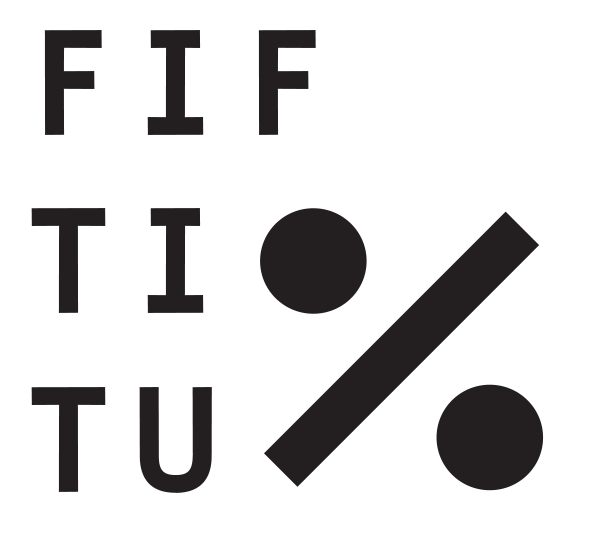Bericht einer Teilnehmerin
In 2011, FIFTITU% focused on equality policies. The FIFTITU% annual program with the motto "We are not all equal, but some are more equal" came to an end at the afo - Architekturzentrum OÖ. The last series of events focused on queerversity, image politics and artistic interventions in public space.
A subjective report.
Popular fantasies
Johanna Schaffer does not necessarily need to be introduced to women* or men*. Anyone with just a little insight into feminist theories will most likely have come across her research. Her dissertation has the telling title "Ambivalences of Visibility". She explores the question of which structures reproduce visibility, inclusion and exclusion mechanisms, i.e. who is visible in the social structure and why? In what form does this happen and how does the reproduction of inequality occur? In her lecture at the afo, Schaffer refers specifically to two positions that are inherently contradictory and irreconcilable, but must nevertheless be negotiated together: she talks about the need for legal instruments with which structural inequality can be challenged. What is paradoxical and interrelated, however, is that women* and men* are aware that such legal instruments are not effective, and that dissent, conflict and uncertainty go hand in hand with this. Those who stay tuned must remain open to paradoxes and uncertainties.
Media decisions or Decolonize your mindSchaffer discusses the visibility of inequality based on film and image analysis. The award-winning work by Marissa Lobo is entitled "Iron Mask, White Torture" and is medially complex. The artist has used various media to draw attention to a racist and sexist problem in an artistic intervention: Nine black activists take on the identity of Anastasia, which is transfigured in traditional narratives to the point of being religious and mythological. The interchangeability of identity leads to a break with the classic narrative. Irritation. These Anastasias now speak for themselves and are no longer narratives - thus bringing the story of Anastasia into the present. A trick that makes it possible to address current inequality: Narrates itself instead of being narrated, in the now, from the individual position. Lobo's work tells the story of colonial continuities of racist and sexist violence in Austria through the figure of Anastasia. The remarkable thing that is revealed in this work, however, is this: There is a great absence of feminist and anti-racist content in the classical media. The hegemonic reproduction of white history and its unbroken tendencies towards denial are popular and are constantly reproduced.
Schaffer argues that if university professors, theater makers and education ministers do not take a stand on structural violence, then the answer to these abuses must lie in equality goals. It is a legal demand for general social goals. This happens, for example, in the form of arithmetical specifications such as quota regulations. Here, too, the crux described at the beginning occurs: the reference to marginalization and discrimination creates a repetition of the same. The film genre of migrant drama also has to struggle with this problem, as it engages in this stereotyping. Popular fantasies of how the so-called or self-proclaimed majority society invents a migrant life for itself and thus reassures itself of its supposed majority become clear here. It is not uncommon for the white man to become the savior of a Turkish girl in the migrant drama! A precarious position is reproduced and repeated by using clichés. The subgenre of migrant drama aims to show racist discrimination, but remains in this cycle. It is therefore necessary to accept and recognize this paradox, but through the act of speaking for oneself, such one-dimensional naming and reproduction can and should be overcome. This is also the case in the area of quota regulation: although the quota issue is still necessary, this paradox also underlies it. A fact that should be kept in mind because it requires constant correction and overcoming. Every group of people who consider themselves to be discriminated against must come to terms with this attribution and should overcome it in the next step. Speaking for oneself, telling one's own story and claiming one's rights: the paradoxical simultaneity of inadequate attribution and the demand to free oneself from it. A constant balancing act between the two levels of legal foundations and societal issues of attribution.
Rhetorical violence in a supposedly caring attitude? Such acts are familiar to women* and men* in politics. Only very briefly and with reluctance did Schaffer put up a poster for the FPÖ: "To get rid of it right away". This is also surprising, as the FPÖ does not actually have a women's or cultural policy. So in the FPÖ poster, H.C. Strache is trying to save Muslim women from being forced to wear headscarves. And yet we thought that church and state had long since been separated. The motive is clear, women* and men* recognize the intention and are disgruntled. The popular and difficult artifact of the headscarf is being put up for discussion without context. This non-policy is against everything that does not correspond to "mia san mia". It is not content that the polis would have negotiated. It is a devaluation and discrediting without background - except for the traditional cliché. A devaluation because there is no discussion. A devaluation because without political connectivity.
What now?
Equality policy functions in a paradox. Although the dividing lines and fault lines in society are shifted, corrected and addressed with the legal means of equality targets, they must also be overcome and their own position made clear in the process. The claim lies in social change. Because hegemony is something that does not correspond to tangible reality. Breaking with hegemonic power is real politics that has nothing to do with parties and elections. It is a politics of the self that is more interested in practices than in identities. It is an advocacy against the solidification of identities and victim roles that are ascribed from the outside. Us and them was yesterday, and this alterity has lasted far too long anyway.
And another crux disturbs equal participation. Although life is an individual responsibility, it is subject to social structures that are currently argued against the backdrop of a market and performance logic. The neoliberal arguments of meritocracy are difficult because they only suggest freedom and equality, as they (1) conceal and negate structural inequality and (2) assume meritocracy as a basic prerequisite. In other words, you can be a "valuable" member of "our" society if you can prove your "contribution" (= performance). Maybe that's why the term or legal status of "asylum seeker" is precarious, because advertising disguises the escape?
Queerversity, according to Schaffer, is a theoretical and practical strategy of political implementation that is currently under development. Queerversity contradicts the economic diction that has risen above social concerns. Queerversity overcomes norm and deviation, in that differences and distinctions signify an ongoing becoming: Enabling dynamic processes, promoting the awareness of diversity (multitude) and learning to endure undefined otherness.
Welcome to a world in which the old ways of speaking are failing!
A workshop at the afo
The following day, after Johanna Schaffer's lecture, the two Viennese artists Marissa Lobo and Iris Borovčnik held a workshop. The FIFTITU% organization team is thoughtful and friendly: if a woman wants to dedicate the day to a workshop, she will be supported in every possible way. And that means childcare allowance, a travel allowance, a barrier-free house, a note that the events will be filmed and documented. Despite the media coverage, it is an intimate setting.
Strategies of critical-artistic practices
This was the title of the workshop by Marissa Lobo and Iris Borovčnik. The aim is to take up space and use artistic interventions to launch their own, perhaps marginalized content.
In a telephone interview for the FIFTITU% program "52 Radiominuten" on Radio FRO, Marissa Lobo was asked how she sees the culture of activism in Austria. Her answer came abruptly and reads as follows: "The common, public space is a controlled one."
What Johanna Schaffer conveyed on a theoretical level: exploring the opportunities of a queer-theoretical stance, will be tried out in practice here. How does that work? Is there an instruction manual that works like an algorithm? Where do we start when each* and every* case requires its own positioning? This is where the artists start. Know your own position and make a distinction. The first step is to become aware of the hegemonic language and way of thinking. We have more or less made ourselves comfortable in this fixed reality, or not. But at least we think we know reality, and this is where the problem begins: the familiar obscures the circumstances. The blind spot. The operational blindness. The cliché that we no longer think about. Warming up at the social campfire. End and rigidity through apparent certainties. Boredom. Unnoticed inequality. Control. We discuss these phenomena in the workshop. On closer inspection, however, these phenomena are social facts. We each describe ourselves with familiar attributes and attributions as a student, a woman, a leftist, a slacker, a foreigner, a slob, living precariously ... in the end, we sit in a circle with the attributions that we have pinned to our bodies on pieces of paper: the self disintegrates and becomes many things. Depending on. What do you want me to be for you? Self-attribution and external attribution are in an interplay. Private reality is not the result of an individual decision. That is an unpleasant realization. After all, the ego says to me that it is me who is at work here.
The end of the culture of dialog
We read texts and break them down. Who is speaking here? What does the text say? And how can the text be retold? And what happens after the end of the dialog culture?
"The dildo is not the phallus and it does not represent the phallus, because the phallus does not exist. It doesn't need to be cut off either, because it's just a greatly enlarged clitoris anyway, swollen merely to fit the model of the dildo."
We watch films of artificial interventions: Kanak Attack, Coco Fusco, Voina, Maria Galindo, the work "White Torture" by Marissa. Kanak Attack somehow gets to me. The protagonist in the video confronts passers-by with the question: "What's it like living here in the white ghetto?" One passer-by reacts shyly and evasively: "How?" "G-H-E-T-T-O! How do you live in the white ghetto?" My civically anchored friendliness and the what-is-and-what-isn't sign up for an argument in my head. Kanak Attak works, even for me. To paraphrase Brecht: first the kindness and then the morality? That's not how an intervention works. It can also hurt, like thinking.
We discuss, look through film footage, we lose the schedule, we try to shoot an intervention from the hip. Everything drowns in discussion. Also about what is now legitimate, where the boundaries lie and whether - now on the occasion of November 9 - the topic of November pogroms would be an option.
We end the workshop without having done a joint intervention in public space. In addition to the time problem, the group struggled with a certain inhibition threshold. An interesting situation, and so telling. Public space, according to Marissa, is a controlled space. And we, above all, know what is appropriate - and what is not.
A text from REH IN WUT
Graphic: Jo Schmeiser

